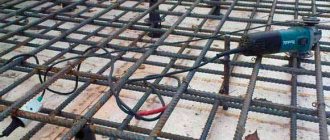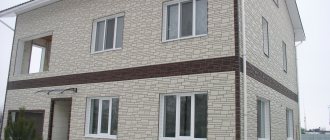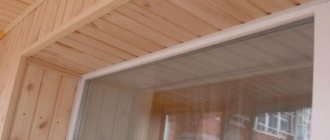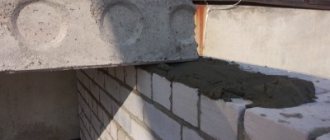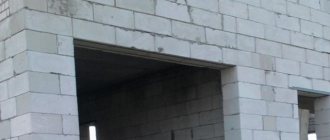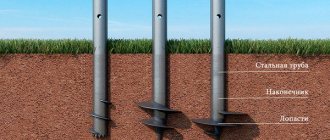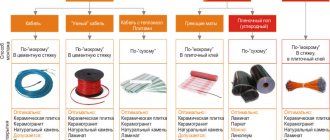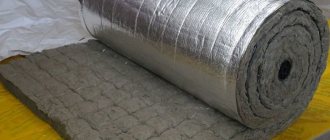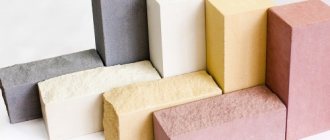Item Description
This type of fittings refers to decorative accompanying elements when finishing plastic slopes. As noted earlier, a window corner for a slope can be used to mask corner joints when working with various materials.
The corner is used to mask the junction of the slope and the wall
The decorative plastic corner is made using special technologies, when a rigid PVC sheet is bent using a “hot” method.
Kinds
The product is universal and is widely used for finishing corners and joints of surfaces made of various finishing materials. Types of plastic corners differ in the material of manufacture and can be made in three versions .
| Made of metal | |
| Made of wood | |
| Made of plastic |
Plastic elements for finishing the slopes of plastic windows have become most popular among consumers. Colored elements can be matched to any interior color scheme. The laminated surface can imitate various materials.
Where is it used?
Plastic angle corners for slopes are widely used for various types of work. It can perform a decorative and practical function at the same time.
- colored elements decorate the corners of window and door openings;
Decorative decoration of a window opening - To install a plasterboard structure, you will need metal elements to fix the corners. Guide metal corners are used when constructing slopes made of plaster. The positive quality of this method is that the guides are not removed, but remain in the body of the structure, ensuring its strength;
Using metal corners, plasterboard slopes are fixed - when wallpapering walls, pasted corners for slopes will protect the corners of the walls from damage;
Corner protects the wall corner from damage - installation of corner strips is carried out for finishing joints when working with various materials. The elements can be used for external slopes.
External joints are also covered with corners
Why do you need a metal corner?
The corner is in demand, its scope of application is very wide:
- In mechanical engineering, this type of rolled product is used for many purposes, for example, frames of non-critical products, fastening and support of various components, and much more.
- In construction, the corner is used to reinforce concrete products in cases where it is necessary to use more powerful reinforcement.
- In agriculture, shipbuilding, and automotive industry, the corner is used similarly to mechanical engineering - frames, fastenings.
Classification
Plastic elements vary depending on the purpose and type of finishing work.
| Name | Appearance |
| Equilateral. They are used when finishing window slopes. | |
| Versatile. Most often they are used to decorate arches. | |
| T-shaped. Used for window slopes when it is necessary to mask the joint between them and the wall. | |
| f-shaped. Used for finishing joints and for reliable fixation of plastic plates in grooves. The starting profile provides a decorative appearance to the end and levels the overall plane. f - shaped profile is used for finishing the window opening. | |
| Removable. They have a latch, which facilitates repair work that does not require removing the slope profile. |
Depending on the type of work performed, installation of corners can be external or internal.
Installation of plastic corners on slopes
In the case of a standard installation, the adhesive mass is applied to the inner surface of the product. The exception is elements with a latch. Installation is simple, the disadvantage is that dismantling is impossible.
Installation of corners is carried out after completion of finishing work.
Preparatory activities
Preparatory work:
- If installing fittings on an untreated surface, carry out a preliminary check for protrusions, potholes, and protruding nails. For maximum adhesion, you need to achieve a flat surface.
- When working with some surfaces, before installation it is necessary to degrease and wipe the corner from dirt.
- Take measurements of the window opening. When measuring, take into account small overlaps so that when cutting the connection, gaps do not form. The recommended overlap length is 1 – 5 mm.
- When cutting off parts, you don’t need to cut the corners right away; it’s better to do it locally.
Docking options:
- By overlapping each other. The resulting difference is covered with sealant to match the color of the material.
- Trimming a corner joint. Looks nicer, requires skill.
The plastic is cut with a utility knife. A blunt instrument may damage the product.
Installation
After thorough preparation of surfaces and materials, you can proceed to installation work.
- Installation can be started from any side.
- Take the corner, turn it wrong side out, and apply glue. The method of applying the glue (dotted, dotted, solid line) is not important. If you need to save the adhesive mixture, spot application will help.
The glue should be applied closer to the corner part for a stronger fixation of the element.
- The workpiece is placed on the surface and pressed. Excess adhesive that appears must be removed immediately. Depending on the adhesive composition, different cleaning agents are used. The most common, suitable for almost all mixtures, is white spirit.
- Additional fixation with masking tape will be required. This is a temporary measure and must be removed after the glue has hardened.
Adhesive tape
- Installation is carried out around the perimeter of the opening.
- After 24 hours, the masking tape is removed.
Installation of plastic corners is simple, but cutting requires skill. The main thing is to be careful, to maintain accuracy in calculations and trimming.
Dimensions
Dimensions are selected based on the type of work to be done - indoors or outdoors . The condition of the corner is also assessed for the presence and nature of defects and damage.
To finish external slopes use wide corners
When installing corners on slopes, it will be enough to use elements measuring 10 x 10 mm or 20 x 20 mm. Wider elements are used for exterior window decoration.
Size tables. Weight 1 meter
Table 1. Equal flange hot-rolled angle GOST 8509-93 .
| Corner number | mm | Cross-sectional area cm2 | Reference values for axes | Macca 1m corner, kg | ||||||||||||||
| b | t | R | r | x - x | x0-x0 | U0-U0 | Jxy, cm4 | Y0, cm | ||||||||||
| Jx, cm4 | Ix, cm3 | ix, cm | Jy0min, cm4 | ix0max, cm | Jy0min, cm | Wy0, cm3 | iy0min, cm | |||||||||||
| 2 | 20 | 3 4 | 3,5 | 1,2 | 1,13 1,46 | 0,40 0,50 | 0,28 0,37 | 0,59 0,58 | 0.6З 0.78 | 0,75 0,73 | 0,17 0,22 | 0,20 0,24 | 0,39 0,38 | 0,23 0,28 | 0,60 0,64 | 0,89 1,15 | ||
| 2,5 | 25 | 3 4 5* | 1,43 1,86 2,27 | 0,81 1,03 1,22 | 0,46 0,59 0,71 | 0,75 0,71 0,73 | 1,29 1,62 1,91 | 0,95 0,93 0,92 | 0,34 0,44 0,53 | 0,33 0,41 0,47 | 0,49 0,48 0,48 | 0,47 0,59 0,69 | 0,73 0,76 0,80 | 1,27 1,46 1,78 | ||||
| 2,8 | 28 | 3 | 4,0 | 1,3 | 1,62 | 1,16 | 0,58 | 0,85 | 1,84 | 1,07 | 0,48 | 0,42 | 0,55 | 0,68 | 0,80 | 1,27 | ||
| 3 | 30 | 3 4 5* | 4,0 | 1,3 | 1,74 2,27 2,78 | 1,45 1,84 2,20 | 0,67 0,87 1,06 | 0,91 0,80 0,89 | 2,30 2,92 3,47 | 1.15 1.1З 1.12 | 0,60 0,77 0,94 | 0,53 0,61 0,71 | 0,59 0,58 0,58 | 0,85 1,08 1,27 | 0,85 0,89 0,93 | 1,36 1,78 2,18 | ||
| 3,2 | 32 | 3 | 4,5 | 1,5 | 1,36 2,43 | 1,77 2,26 | 0,77 1,0 | 0,97 0,96 | 2,80 3,58 | 1,23 1,21 | 0,74 0,94 | 0,59 0,71 | 0,63 0,62 | 1,03 1,32 | 0,89 0,94 | 1,46 1,91 | ||
| 4 | ||||||||||||||||||
| 3,5 | 35 | 3 | 2,04 2,17 3,28 | 2,35 3,01 3,61 | 0,93 1,21 1,47 | 1,07 1,06 1,05 | 3,72 4,76 5,71 | 1,35 1,33 1,32 | 0,97 1,25 1.52 | 0,71 0,88 1,02 | 0,69 0,68 0,68 | 1,37 1,75 2,10 | 0,97 1,01 1,05 | 1.60 2,10 2,58 | ||||
| 4 | ||||||||||||||||||
| 5 | ||||||||||||||||||
| 4 | 40 | 3 4 5 b* | 5,0 | 1,7 | 2,35 3,08 3,79 4,48 | 3,55 4,58 5.53 6,41 | 1,22 1,60 1,95 2,30 | 1.23 1,22 1,21 1,20 | 5,63 7,26 8,75 10,13 | 1,55 1,53 1,52 1.50 | 1,47 1,90 2,30 2,70 | 0,95 1,19 1,39 1,58 | 0,79 0,78 0,78 0,78 | 2,08 2,68 3,22 3,72 | 1,09 1,13 1,17 1,21 | 1,85 2,42 2,98 3,52 | ||
| 4,5 | 45 | 3 4 5 6* | 2,65 3,48 4,29 5,08 | 5,13 6,63 8,03 9,35 | 1,56 2,04 2,51 2,95 | 1,39 1,38 1,37 1,36 | 8,13 10,52 12,74 14,80 | 1,75 1,74 1,72 1,71 | 2,12 2,74 3,33 3,90 | 1,24 1,54 1,81 2.06 | 0,89 0,89 0,88 0,88 | 3,00 3,89 4,71 5,45 | 1,21 1,26 1,30 1,34 | 2,08 2,73 3,37 3,99 | ||||
| 5 | 50 | 3 4 5 6 7* 8* | 5,5 | 1,8 | 2,96 3,89 4,80 5,69 6,56 7,41 | 7,11 9,21 11,20 13,07 14.84 16,51 | 1,94 2,54 3,13 3,69 4,23 4,76 | 1,55 1,54 1,53 1,52 1,50 1,49 | 11,27 14,63 17,77 20,72 23.47 26,03 | 1,95 1,94 1,92 1,91 1,89 1,87 | 2,95 3,80 4,63 5,43 6,21 6,98 | 1,57 1,95 2,30 2,63 2,93 3,22 | 1,00 0,99 0,98 0,98 0.97 0,97 | 4,16 5,42 6,57 7,65 8,63 9,52 | 1,33 1,38 1,42 1,46 1,50 1,53 | 2,32 3,05 3,77 4,47 5,15 5,82 | ||
| 5,6 | 56 | 4 5 | 6,0 | 2,0 | 4,38 5,41 | 13,10 15,97 | 3,21 3,96 | 1,73 1,72 | 20.79 25,36 | 2,18 2,16 | 5,41 6,59 | 2,52 2,97 | 1,11 1,10 | 7,69 9,41 | 1,52 3,57 | 3,44 4,25 | ||
| 6* | 60 | 4 | 7,0 | 2,3 | 4,72 | 16,21 | 3,70 | 1,85 | 25,69 | 2,33 | 6,72 | 2,93 | 1,19 | 9.4S | 1,62 | 3,71 | ||
| 5 | 5,83 | 19,79 | 4,56 | 1,84 | 31,40 | 2,32 | 8,18 | 3,49 | 1,18 | 11,61 | 1,66 | 4,58 | ||||||
| 6 | 6,92 | 23,21 | 5,40 | 1,83 | 36,81 | 2,31 | 9,60 | 3,99 | 1,18 | 13,60 | 1,70 | 5,43 | ||||||
| 8 | 9,04 | 29,55 | 7,00 | 1,81 | 46,77 | 2,27 | 12,34 | 4,90 | 1,17 | 17,22 | 1,78 | 7,10 | ||||||
| 10 | 11,08 | 35,32 | 8,52 | 1,79 | 55,64 | 2,24 | 15,00 | 5,70 | 1,16 | 20,32 | 1,85 | 8,70 | ||||||
| 6,3 | 63 | 4 | 4,96 | 18,86 | 4,09 | 1,95 | 29,90 | 2,45 | 7,81 | 3,26 | 1,25 | 11,00 | 1,69 | 3,90 | ||||
| 5 | 6,13 | 23,10 | 5,05 | 1,94 | 36.8O | 2,44 | 9,52 | 3,87 | 1,25 | 13,70 | 1,74 | 4,81 | ||||||
| 6 | 7,28 | 27,06 | 5,98 | 1,93 | 42,91 | 2,43 | 11,18 | 4,44 | 1,24 | 15,90 | 1,78 | 5,72 | ||||||
| 7 | 70 | 4,5 | 8,0 | 2,7 | 6,20 | 29,04 | 5,67 | 2,16 | 46,03 | 2,72 | 12,04 | 4,53 | 1,39 | 17,00 | 1.8S | 4,87 | ||
| 5 | 6,86 | 31,94 | 6,27 | 2,16 | 50,67 | 2,72 | 13,22 | 4,92 | 1,39 | 18,70 | 1,90 | 5,38 | ||||||
| 6 | 8,15 | 37,58 | 7,43 | 2,15 | 59,64 | 2,71 | 15,52 | 5,66 | 1,38 | 22,10 | 1,94 | 6,39 | ||||||
| 7 | 9,42 | 42.98 | 8,57 | 2.14 | 68,19 | 2,69 | 17,77 | 6,31 | 1,37 | 25,20 | 1,99 | 7,39 | ||||||
| 8 | 10,67 | 48,16 | 9,68 | 2,12 | 76,35 | 2,68 | 19,97 | 6,99 | 1,37 | 28,20 | 2,02 | 8,37 | ||||||
| 10* | 13,11 | 57,90 | 11,82 | 2,10 | 91,52 | 2,64 | 24,27 | 8,17 | 1,36 | 33,60 | 2,10 | 10,29 | ||||||
| 7,5 | 75 | 5 | 9,0 | 3,0 | 7,39 | 39,53 | 7,21 | 2,31 | 62,65 | 2,91 | 16,41 | 5,74 | 1,49 | 23,10 | 2,02 | 5,80 | ||
| 6 | 8,78 | 46,57 | 8,57 | 2,30 | 73,87 | 2,90 | 19,28 | 6,62 | 1,48 | 27,30 | 2,06 | 6,89 | ||||||
| 7 | 10,15 | 53,34 | 9,89 | 2,29 | 84,61 | 2,89 | 22,07 | 7,43 | 1,47 | 31,20 | 2,10 | 7,96 | ||||||
| S | 11,50 | 59,84 | 11,18 | 2,28 | 94,89 | 2,87 | 24,80 | 8,16 | 1,47 | 35,00 | 2,15 | 9,02 | ||||||
| 9 | 12,83 | 66,10 | 12,43 | 2,27 | 104,72 | 2,86 | 27,48 | 8,91 | 1,46 | 38,60 | 2,18 | 10,07 | ||||||
| 8 | 80 | 5,5 | 9,0 | 3,0 | 8,63 | 52,68 | 9,03 | 2,47 | 83,56 | 3,11 | 21,80 | 7,10 | 1,59 | 30,90 | 2,17 | 6,78 | ||
| 6 | 9,38 | 56,97 | 9,ao | 2,47 | .90,40 | 3,11 | 23,54 | 7,60 | 1,58 | 33,40 | 2,19 | 7,36 | ||||||
| 7 | 10,85 | 65,31 | 11,32 | 2,45 | 103,60 | 3,09 | 26,97 | 8,55 | 1,58 | 38,30 | 2,23 | 8,51 | ||||||
| & | 12,30 | 73,36 | 12,80 | 2,44 | 116,39 | 3,08 | 30,32 | 9,44 | 1,57 | 43,00 | 2,27 | 9,65 | ||||||
| 10* | 15,14 | 83,58 | 15,67 | 2,42 | 140,31 | 3,04 | 36,85 | 11,09 | 1,56 | 56,70 | 2,35 | 11,88 | ||||||
| 12* | 17,90 | 102,74 | 18,42 | 2,40 | 162,27 | 3,01 | 43,21 | 12,62 | 1,55 | 59,50 | 2,42 | 14,05 | ||||||
| 9 | 90 | 6 | 10,0 | 3,3 | 10,61 | 82,10 | 12,49 | 2,78 | 130,00 | 3,50 | 33,97 | 9,88 | 1,79 | 48,10 | 2,43 | 8,33 | ||
| 7 | 12,28 | 94,30 | 14,45 | 2,77 | 149,67 | 3,49 | 38,94 | 11,15 | 1,78 | 55,40 | 2,47 | 9,64 | ||||||
| 8 | 13,93 | 106,11 | 16,36 | 2,76 | 168,42 | 3,48 | 43,80 | 12,34 | 1,77 | 62,30 | 2,51 | 10,93 | ||||||
| 9 | 15,60 | 118,00 | 18,29 | 2,75 | 186,00 | 3,46 | 48,60 | 13,48 | 1,77 | 68,00 | 2,55 | 12,20 | ||||||
| 10* | 17,17 | 128,66 | 20,07 | 2,74 | 203,93 | 3,45 | 53,27 | 14,54 | 1,76 | 75,30 | 2,59 | 13,48 | ||||||
| 12* | 20,33 | 149,67 | 23,85 | 2,71 | 235,88 | 3,41 | 62,40 | 16,53 | 1,75 | 86,20 | 2,67 | 15,96 | ||||||
| 10 | 100 | 6 | 12,0 | 4,0 | 12,82 | 122,10 | 16,69 | 3,09 | 193,46 | 3,89 | 50,73 | 13,38 | 1,99 | 71,40 | 2,68 | 10,06 | ||
| 7 | 13,75 | 130,59 | 17,90 | 3,08 | 207,01 | 3,88 | 54,16 | 14,13 | 1,98 | 76,40 | 2,71 | 10,79 | ||||||
| 8 | 15,60 | 147,19 | 20,30 | 3,07 | 233,46 | 3,87 | 60,92 | 15,66 | 1,98 | 86,30 | 2,75 | 12,25 | ||||||
| 10 | 19,24 | 178,95 | 24,97 | 3,05 | 283,83 | 3,84 | 74,08 | 18,51 | 1,96 | 110,00 | 2,83 | 15,10 | ||||||
| 12 | 22,80 | 208,90, | 29,47 | 3,03 | 330,95 | 3,81 | 86,84 | 21,10 | 1,95 | 122,00 | 2,91 | 17,90 | ||||||
| 14 | 26,28 | 237,15 | 33,83 | 3,00 | 374,98 | 3,78 | 99,32 | 23,49 | 1,94 | 138,00 | 2,99 | 20,63 | ||||||
| 15* | 27.99 | 250,68 | 35,95 | 2,99 | 395,87 | 3,76 | 105,48 | 24,62 | 1,94 | 145,00 | 3,03 | 21,37 | ||||||
| 16 | 29,68 | 263,82 | 38,04 | 2,98 | 416,04 | 3,74 | 111,61 | 25,79 | 1,94 | 152,00 | 3,06 | 23,30 | ||||||
| 11 | 110 | 7 | 15,15 | 175,61 | 21,83 | 3,40 | 278,54 | 4,29 | 72,68 | 17,36 | 2,19 | 106,00, | 2,96 | 11,89 | ||||
| 8 | 17,20 | 198D7 | 24,77 | 3,39 | 314,51 | 4,28 | 81,83 | 19,29 | 2,18 | 116,00 | 3,00 | 13,50 | ||||||
| 12 | 120 | 8 | 12,0 | 4,0 | 18,80 | 259,75 | 29,68 | 3,72 | 412,45 | 4,68 | 107,04 | 23,29 | 2,39 | 153,00 | 3,25 | 14,76 | ||
| 10 | 23,24 | 317,16 | 36,59 | 3,69 | 503,79 | 4,66 | 130,54 | 27,72 | 2,37 | 187,00 | 3,33 | 18,24 | ||||||
| 12 | 27,60 | 371,80 | 43,30 | 3,67 | 590,28 | 4,62 | 153,33 | 31,79 | 2,36 | 218,00 | 3;41 | 21,67 | ||||||
| 15 | 33,99 | 448,90 | 52,96 | 3,63 | 711,32 | 4,57 | 186,48 | 37,35 | 2,34 | 262,00 | 3,53 | 26.68 | ||||||
| 12,5 | 125 | 8 | 14,0 | 4,6 | 19,69 | 294,36 | for, 20 | 3,87 | 466,76 | 4,87 | 121,98 | 25,67 | 2,49 | 172,00 | 3,36 | 15,46 | ||
| 9 | 22,0 | 327,48 | 36,00 | 3,86 | 520,00 | 4,86 | 135,58 | 28,26 | 2,48 | 192,00 | 3,40 | 17,30 | ||||||
| 10 | 24,33 | 359,82 | 39,74 | 3,85 | 571,04 | 4,84 | 148,59 | 30,45 | 2,47 | 211,00 | 3,45 | 19,10 | ||||||
| 12 | 2M9 | 422,23 | 47,06 | 3,82 | 670,02 | 4,82 | 174,43 | 34,94 | 2,46 | 248,00 | 3,53 | 22,68 | ||||||
| 14 | 33>37 | 481,76 | 54,17 | 3,80 | 76190 | 4,78 | 199,62 | 39,10 | 2,45 | 232,00 | 3,61 | 26,20 | ||||||
| 16 | 37,77 | 538,56 | 61,09 | 3,78 | 852,84 | 4,75 | 224,29 | 43,10 | 2,44 | 315,00 | 3,68 | 29,65 | ||||||
| 14 | 140 | 9 | 14,0 | 4,6 | 24,72 | 405,72 | 45,55 | 4,34 | 739,42 | 5,47 | 192,03 | 35,92 | 2,79 | 274,00 | 3,76 | 19,41 | ||
| 10 | 27,33 | 512,29 | 50,32 | 4,33 | 813,62 | 5,46 | 210,96 | 39,05 | 2,78 | 301,00 | 3,82 | 21,45 | ||||||
| 12 | 32,49 | 602,43 | 59,66 | 4,31 | 956,98 | 5,43 | 248,01 | 44,97 | 2,76 | 354,00 | 3,90 | 25,50 | ||||||
| Angles marked with an asterisk are manufactured according to customer requirements. GOST 8509-93 provides profile numbers; 16, 18, 20, 22 and 25, as well as profiles manufactured by agreement between manufacturers and consumers. The cross-sectional area and reference values are calculated based on the nominal dimensions. Steel density 7.85 g/cm3. | ||||||||||||||||||
Table 2. Metal unequal angle GOST 8510-93 .
| Size, mm | Weight 1 m, kg | Meters per ton | ||
| B | b | t | ||
| 25 | 16 | 3,0 | 0,91 | 1098,90 |
| 32 | 20 | 3,0 | 1,17 | 854,70 |
| 4,0 | 1,52 | 657,89 | ||
| 40 | 25 | 3,0 | 1,48 | 675,68 |
| 4,0 | 1,94 | 515,46 | ||
| 5,0 | 2,37 | 421,94 | ||
| 45 | 28 | 3,0 | 1,68 | 595,24 |
| 4,0 | 2,20 | 454,55 | ||
| 50 | 32 | 3,0 | 1,90 | 526,32 |
| 4,0 | 2,40 | 416,67 | ||
| 56 | 36 | 4,0 | 2,81 | 355,87 |
| 5,0 | 3,46 | 289,02 | ||
| 63 | 40 | 4,0 | 3,17 | 315,46 |
| 5,0 | 3,91 | 255,75 | ||
| 6,0 | 4,63 | 215,98 | ||
| 8,0 | 6,03 | 165,84 | ||
| 75 | 50 | 5,0 | 4,79 | 208,77 |
| 6,0 | 5,69 | 175,75 | ||
| 8,0 | 7,43 | 134,59 | ||
| 90 | 56 | 6,0 | 6,70 | 149,25 |
| 100 | 63 | 6,0 | 7,53 | 132,80 |
| 7,0 | 8,70 | 114,94 | ||
| 8,0 | 9,87 | 101,32 | ||
| 10,0 | 12,14 | 82,37 | ||
| 110 | 70 | 6,5 | 8,98 | 111,36 |
| 8,0 | 10,93 | 91,49 | ||
| 125 | 80 | 8,0 | 12,58 | 79,49 |
| 10,0 | 15,47 | 64,64 | ||
| 12,0 | 18,34 | 54,53 | ||
| 140 | 90 | 8,0 | 14,13 | 70,77 |
| 10,0 | 17,46 | 57,27 | ||
| 160 | 100 | 9,0 | 17,96 | 55,68 |
| 10,0 | 19,85 | 50,38 | ||
| 12,0 | 23,58 | 42,41 | ||
| 14,0 | 27,26 | 36,68 | ||
| 180 | 110 | 10,0 | 22,20 | 45,05 |
| 12,0 | 26,40 | 37,88 | ||
| 200 | 125 | 12,0 | 29,74 | 33,62 |
| 14,0 | 34,43 | 29,04 | ||
| 16,0 | 39,07 | 25,60 | ||
Equal and unequal angles are: hot rolled ( GOST 8510-86 and GOST 8509-93 ) and bent ( GOST 19771-93 and GOST 19772-93 ). The former are stronger and are used in structures designed for increased loads. Bent angles are produced from rolled sheets using roll forming units.
Table 3. Equal-flange bent angle GOST 19771-93 . Dimensions and weight of angles made of carbon boiling and semi-calm steel of ordinary quality, high-quality carbon steel with a tensile strength of no more than 460 N/mm2
| b, mm | S, mm | R, no more, mm | Weight 1 m, kg | Number of meters 1 t |
| 36 | 3 | 4 | 1,569 | 637,2 |
| 40 | 2,5 | 3 | 1,485 | 673,3 |
| 40 | 3 | 4 | 1,758 | 568,9 |
| 50 | 3 | 4 | 2,229 | 448,7 |
| 50 | 4 | 6 | 2,907 | 344,0 |
| 60 | 3 | 4 | 2,700 | 370,4 |
| 60 | 4 | 6 | 3,535 | 282,9 |
| 70 | 4 | 6 | 4,163 | 240,2 |
| 80 | 3 | 4 | 3,642 | 274,6 |
| 80 | 4 | 6 | 4,791 | 208,7 |
| 80 | 5 | 7 | 5,924 | 168,8 |
| 80 | 6 | 9 | 7,011 | 142,6 |
| 80 | 7 | 9 | 8,113 | 123,3 |
| 100 | 4 | 6 | 6,047 | 165,4 |
| 100 | 5 | 7 | 7,494 | 133,4 |
| 100 | 6 | 9 | 8,895 | 112,4 |
| 100 | 7 | 9 | 10,31 | 96,99 |
| 120 | 5 | 7 | 9,064 | 110,3 |
| 120 | 6 | 9 | 10,78 | 92,77 |
Table 4. Unequal bent angle GOST 19772-93 . Dimensions and weight of angles made of carbon boiling and semi-calm steel of ordinary quality, high-quality carbon steel with a tensile strength of no more than 460 N/mm2
| B, mm | b, mm | S, mm | R, no more, mm | Weight 1 m, kg | Number of meters in 1 ton |
| 32 | 25 | 2 | 3 | 0.3 365 | 1195 |
| 32 | 25 | 2,5 | 3 | 1,034 | 967,3 |
| 50 | 35 | 3,2 | 5 | 1,934 | 504,1 |
| 60 | 40 | 3 | 4 | 2,229 | 448,7 |
| 70 | 50 | 4 | 6 | 3,535 | 232,9 |
| 30 | 63 | 4 | 6 | 4,257 | 234,9 |
| 35 | 35 | 4 | 6 | 3,535 | 232,9 |
| 90 | 70 | 4 | 6 | 4,791 | 208,7 |
| 100 | 65 | 4 | 6 | 4,943 | 202,1 |
| 105 | 100 | 3 | 4 | 4,702 | 212,7 |
| 115 | 65 | 5 | 7 | 6,709 | 149,1 |
| 120 | 100 | 8 | 12 | 12,33 | 77,63 |
| 100 | 140 | 6 | 9 | 14,55 | 68,74 |
Table 5. Unequal bent corner. Dimensions and weight of angles made of carbon semi-quiet and calm steel of ordinary quality, high-quality carbon steel with a tensile strength of more than 460 N/mm2 and low-alloy
| B, mm | b, mm | S, MM | R, no more, mm | Weight 1 m, kg | Number of meters in 1 ton |
| 40 | 25 | 2,5 | 6 | 1,165 | 858,0 |
| 70 | 50 | 4 | 10 | 3,481 | 237,3 |
| 35 | 67 | 4 | 10 | 4,485 | 222,9 |
| 90 | 70 | 4 | 10 | 4,737 | 211,1 |
| 110 | 90 | 5 | 10 | 7,443 | 134,4 |
| 115 | 65 | 5 | 10 | 6,653 | 150,2 |
| 147 | 125 | 8 | 20 | 15,93 | 62,77 |
| 152 | 100 | 5,5 | 12 | 10,37 | 96,44 |
| 155 | 100 | 6 | 14 | 11,38 | 87,34 |
At metallurgical enterprises, angles produced in accordance with GOST 8509-93 and GOST 8510-93 are obtained by plastic deformation of a heated steel billet (bloom). The rolled product range is formed in strict accordance with the established range of standard sizes, taking into account permissible deviations and accuracy classes.
Thus, the curvature coefficient for hot-rolled angle steel is set to no more than 0.4% , and the linear error in the length of the product is no more than 0.75% .
At the same time, accuracy classes are distinguished: “ A ” - high, “ B ” - increased and “ C ” - normal.
When developing various designs, not only at the professional level, but also for private use, it is also important to take into account the steel grade of the product, as well as the tempering dimension of the angle. Its implementation is carried out in measured and multiples of measured lengths, that is, from 4 m to 12 m or unmeasured. There may be trimmings and substandard ones, which can be purchased at reduced prices.
Peculiarities
These elements have become widespread in various fields due to their positive qualities.
- used to mask corner joints of various materials; right angles are formed at the finishing site;
- These are durable elements, the service life of which is estimated at tens of years; they are easy to install and process;
- the presence of several types of materials from which these products are made allows them to be used in different conditions and for different jobs; a wide range of colors and textures for the appearance of fittings; they are affordable;
- like the PVC profile for slopes, the fittings are highly moisture resistant;
- despite the fact that plastic slopes are susceptible to the formation of condensation on their surface, neither they nor the corners rot or become moldy;
- installation of plastic elements on slopes made of plaster allows you to form perfectly even corners;
- during repair work, metal perforated products are used to strengthen joints and corners;
- PVC profiles and corners are safe for the environment and people;
- due to the low weight of the PVC profile and corner, the structure is not loaded;
- they are resistant to mechanical stress and are not subject to deformation under the influence of the sun.
Disadvantages include the fragility of the material, which is easily damaged during processing, and the release of toxic substances during a fire.
Perforated corner for putty: which one to choose and how to attach it
Puttying the corners of a two-level ceiling begins with the installation of perforated corners
If you do not live in a round tower without windows and doors, then your home must have corners - internal and external. And during repairs, you have to decide how to finish them so that they turn out perfectly smooth and protected from mechanical influences. If the joint between the walls and the ceiling or floor is easy to hide with a plinth/cornice, then the filling of the internal corners between the walls and the external ones formed by window and door slopes, niches and protrusions must be done efficiently. To simplify this task, special perforated corners are used, the purpose and types of which you will learn from this article.
Glue selection
When choosing an adhesive composition, it is necessary to give preference to such products that can be used for PVC products.
It is common to use silicone sealants for gluing a product, but it is important to consider that they are washed off with water and lose their qualities over time. As a result, the product may become loose .
Installation of slopes on plastic windows and their finishing has recently been increasingly carried out using “liquid plastic” technology.
Liquid plastic is used to glue slopes using new technology
For this purpose, glue of the same name is used, which is a liquid plastic. This material has many positive qualities:
- it does not lose its performance even after ten years;
- it does not turn yellow over time like silicone sealant;
- allows you to create an integral monolithic structure when finishing a window opening.
It is not recommended to use silicone sealant for gluing slopes.
You can use it to glue the starting profile. Liquid plastic is used as window sill adhesive. This modern material is also used for installing plastic trim on windows.
Adviсe
Alignment of the internal corner is carried out by making a beacon directly in the corner, with further tightening of the corner by the width of the rule. It should be borne in mind that the longer the rule used, the smoother and less noticeable the transition from the inner corner to the wall will be.
Before aligning the corners, you should use a rule to evaluate their overall curvature. By applying the rule to the corners, humps and recesses are identified and they are outlined with a pencil, so that in the future you can navigate in which places and how much to apply the solution.
Next, treat the surface of the corners with a deep penetration primer. This will strengthen the surface of the walls and ensure good adhesion of the putty. Priming should be done to a width greater than the length of the rule used. After the soil has completely dried, you can begin making a lighthouse in the corner.
The lighthouse is a path of prepared gypsum plaster 5 cm wide. To make it, the gypsum mixture is diluted and mixed twice (to ensure the complete disappearance of lumps). Next, the mixture is applied in a corner to the wall and leveled vertically, forming a flat surface (including vertically).
Achieving a flat surface can be achieved using a level and additional support points for the beacon (existing protrusions and self-tapping screws screwed into the wall can be used as support points). Two walls meet in the corner, so you will need to make a second beacon on the other wall (after the first beacon has dried).
After the beacons have dried, you can tighten the walls using the rule
As a result, it is important to reduce the corner and the wall to nothing. After applying putty to the wall (to the length of the rule), you should rest it with one end on the beacon, the other on the wall and then pull off the excess
To prevent thin layers of putty from tearing, you need to use a spray bottle before re-taping.
To fill in scratches and grooves, you can apply another thin layer (apply as a rule after the plaster has completely hardened). Then you need to wait for the applied layers of plaster to dry and sand the surface.
The video will demonstrate the process of plastering internal corners.
Preparation and installation
To learn how to glue plastic corners, you can familiarize yourself with the sequence of work.
First you need to make sure that the corners do not have obvious protruding elements. Before gluing the product, it must be degreased.
How to glue plastic corners to slopes efficiently and reliably is described below.
- The product is applied to the surface of the wall and the necessary marks are made from below and above on the elements that will be located vertically and on both sides of the horizontal elements of the window slopes;
Measuring corners - To avoid the appearance of a gap, the measurement of vertical parts should take place after attaching the upper horizontal corner, and the lower ones - after gluing the elements vertically;
- Using metal scissors, you need to make cuts in accordance with the marks. In this case, the inner part is cut at a right angle, and the outer part is cut at 45°;
The outer part of the corner is cut at an angle of 45° - To properly glue products to window slopes, apply an adhesive composition to the inside of the product, maintaining an interval of 1 - 1.5 cm.
Applying glue to the corner - The products should be fastened by pressing them firmly to the corners of the window slopes. To achieve a strong adhesion, the products should be secured with masking tape. . When working with liquid PVA, the strength of the connection is ensured after 1 minute.
It is recommended to fix the corner after gluing with masking tape.
Using a steel corner as a lintel in walls made of brick and aerated concrete block
It is worth noting that brickwork is able to withstand its own weight after it has gained grade strength, provided that the opening is of moderate width and no load from the floor is provided. But during the process of hardening of the masonry mortar, the structure must be provided with support, which can be easily constructed using a steel angle.
To strengthen a brick wall with corner bars, the following conditions are met:
- the support should not be less than 20 cm on each side;
- before plastering, the corners should be wrapped with a special mesh;
- before using hardware, it should be completely painted;
- the gaps between the wall and the corner are filled with masonry mortar marked at least M100.
Key features of using steel angle when arranging lintels in aerated concrete walls:
- the corner cuts directly into the block (a third of the width of the metal product extends from the edge);
- It is strictly not recommended to install a lintel from inside or outside the walls;
- the blocks are fixed to the lintel with glue (vertical seams are also filled);
- the outer side of the corner is plastered and insulated after installing the door or window.
If you install the lintel incorrectly and do not insulate the structure from the outside, moisture may accumulate on the slopes inside the room.
To equip an opening less than 1.2 m wide, a corner with a shelf width of 50 mm is sufficient. Rolled products with 75 mm shelves are better suited for openings with parameters in the range from 1.2 to 2 m. If the width exceeds 2 m, you should seek professional help or calculate the parameters of a suitable option using special calculator programs.
